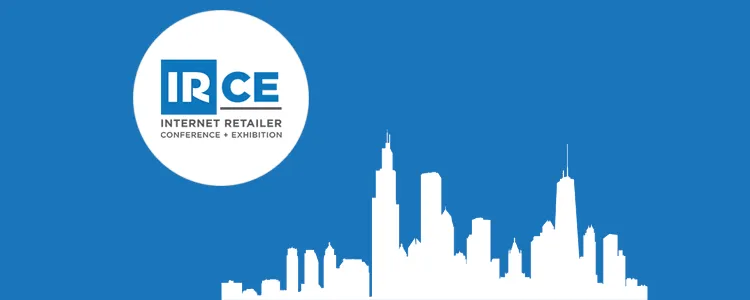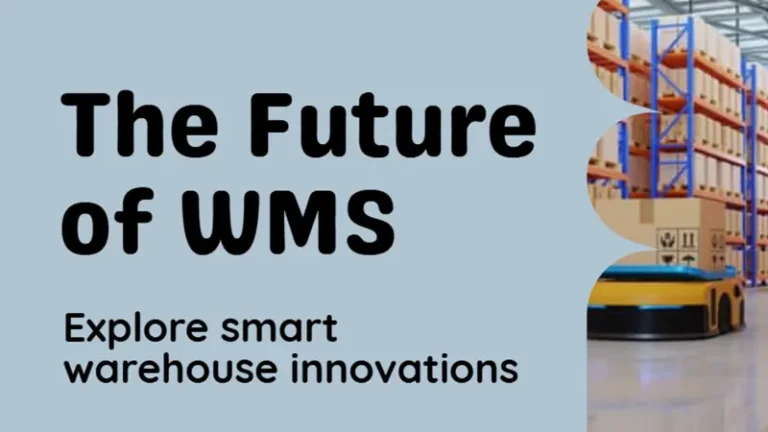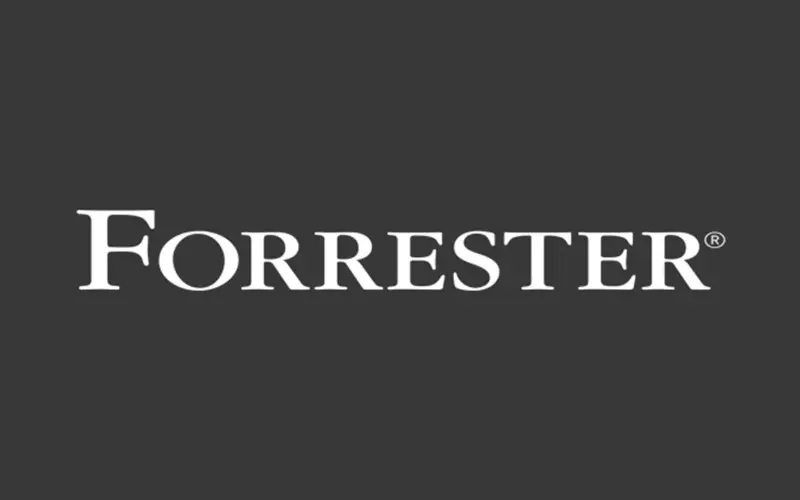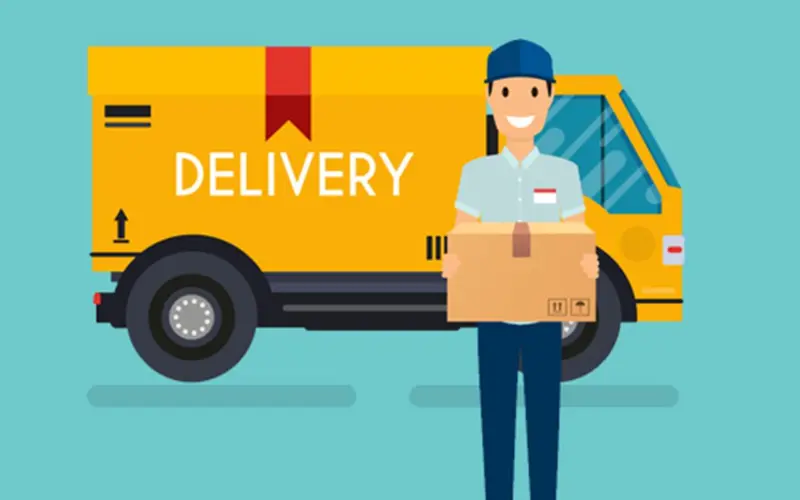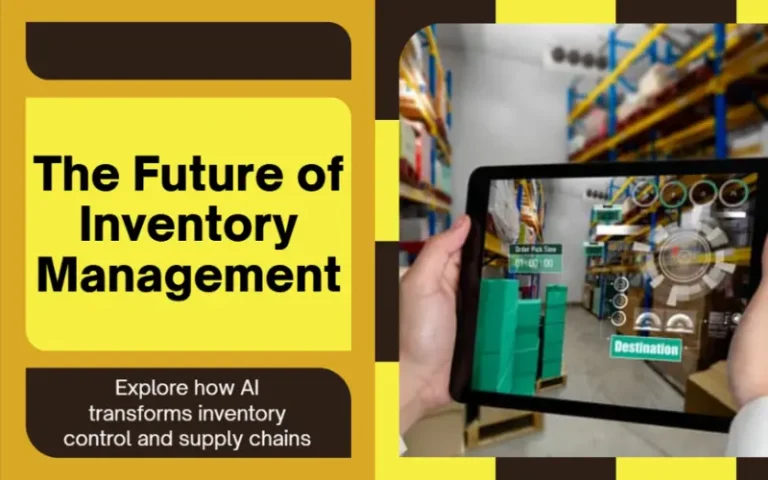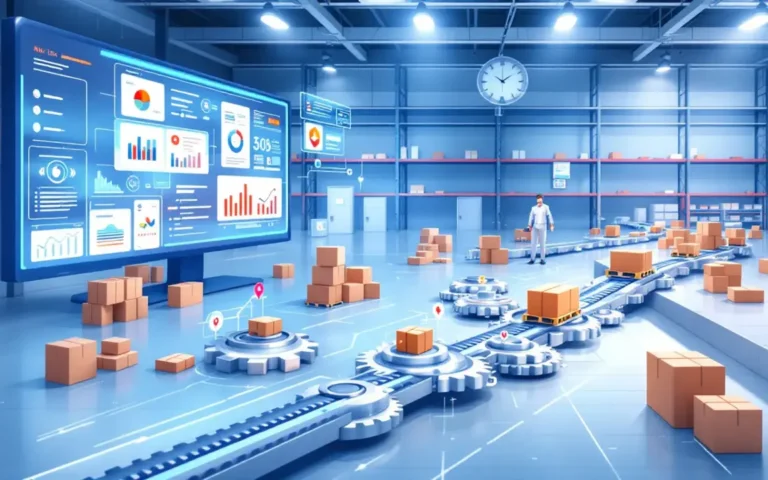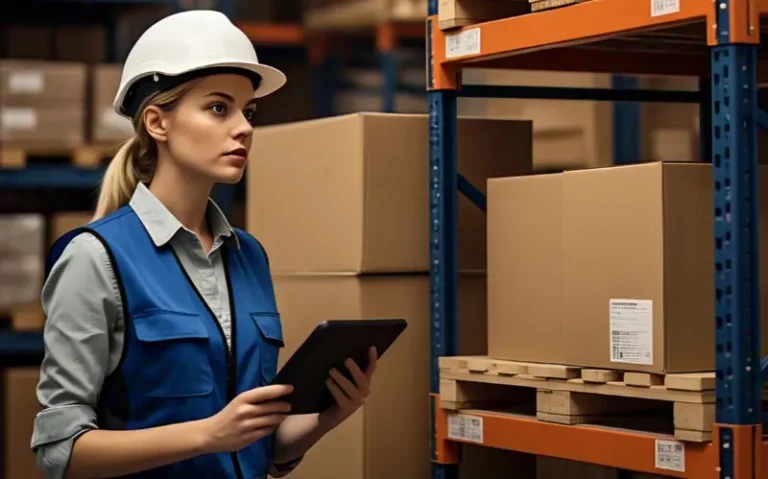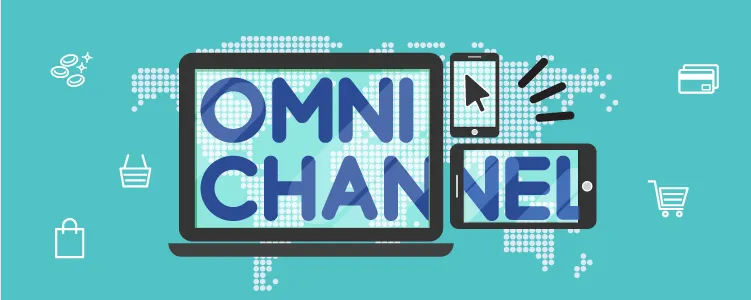Meet Pulse Commerce at IRCE 2019
In this article
 1 minute
1 minute
IRCE’s conference offers strategic educational sessions on the topics that matter to you most. With over 130 sessions covering various topics and trends, your needs are met at IRCE. The exhibit hall features 600+ top solution and technology vendors, ready to help your business succeed in every facet.
If you are making your way to IRCE this year, come stop by Pulse Commerce’s booth #1111. We invite all growth-minded merchants to come talk to us about industry best practices and explore how we can improve their business performance.
Slash Your Fulfillment Costs by Up to 30%
Cut shipping expenses by 30% and boost profit with Cahoot's AI-optimized fulfillment services and modern tech —no overheads and no humans required!
I'm Interested in Saving Time and Money
Turn Returns Into New Revenue
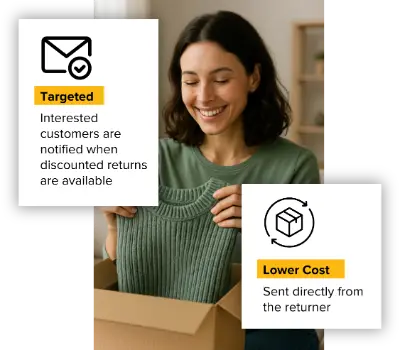
Leading Industry Analyst Forrester Adds Pulse Commerce to Omnichannel OMS Report
In this article
 1 minute
1 minute
Pulse Commerce has been included in the “Now Tech: Omnichannel Order Management Systems, Q2 2018” report by a leading industry analyst. The report can be utilized by retailers to select from a diverse set of vendors and understand the value they can expect from an omnichannel OMS provider. We are very excited to be a part of this chosen list of vendors.
Per Forrester – You can use an omnichannel order management system (OMS) to provide enterprise-level inventory visibility and distributed order management, customer order management, and store fulfillment. But to access these benefits, you’ll first have to select from a diverse set of vendors — vendors that vary by size, target market, geography, and vertical market focus. Digital business pros should use Forrester’s Now Tech report to understand the value they can expect from an omnichannel OMS provider and select vendors based on size and target market.

Turn Returns Into New Revenue

5 Ways to Improve the Parcel Delivery Experience
“The last mile” is now the Holy Grail of ecommerce shipping. A merchant can do an amazing job of selling and provide an outstanding shopping experience, yet if the package is late or damaged, a customer may complain on social media, even if the carrier is to blame.
You can’t directly control the last mile — i.e., the distance from a local transportation hub to the final destination — but you can improve the communication with your customer to provide excellent service, even when things go wrong.
Here are a few ways that merchants can provide an outstanding delivery experience and produce a positive brand impression.
5 Ways to Improve the Parcel Delivery Experience
1. Avoid porch pirates. Porch pirates are thieves that steal parcels from recipients’ porches. Many articles have been written about how to prevent this type of theft. Ideas include security cameras, lockers, and services like Package Guard, which notifies a recipient when a package is delivered.
But the most foolproof way to avoid theft is to ensure that the customer is home when the parcel arrives. Retailers can schedule delivery times and provide frequent delivery notifications (see 3., below), so consumers know when to be home. Saturday delivery options provide even more opportunities to stop package theft.
2. Provide delivery windows, with options. Customers expect tight delivery windows — ideally, 8 a.m. to 12 p.m. on a specific day, with notification an hour or so before delivery. Provide the ability for your customers to choose a delivery date and, if possible, a time.
Even better, empower them with different ways to receive packages. For example, Jet.com is installing Latch, a sophisticated access system, in 1,000 New York City apartment buildings for easier deliveries. Residents can use their phone as a key, grant access to guests without walking downstairs, and get packages delivered safely without being home.
Also, Amazon Locker is available to merchants using Fulfillment by Amazon. It is similar to a post office box, but only for Amazon deliveries. Customers get an email as soon as the package arrives at the locker and they have three days to pick it up. Similar services include FedEx Ship&Get, USPS Gopost, and UPS Access Point lockers.
Amazon is also testing delivering directly to customers’ car trunks, while Walmart is testing deliveries straight to customers’ refrigerators. Commitment to improving the last mile experience is immense. Independent merchants should not be too far behind.
Slash Your Fulfillment Costs by Up to 30%
Cut shipping expenses by 30% and boost profit with Cahoot's AI-optimized fulfillment services and modern tech —no overheads and no humans required!
I'm Interested in Saving Time and Money3. Send frequent delivery notifications via preferred mediums. Customers have their own preferred forms of communication. The more choices they have, the more likely they are to receive and read your updates. The top three consumer choices for communication are typically email, text message, and a company order-tracking page. As a start, offer all three.
Customers appreciate being notified when an order is going to ship, when it has shipped, where the item is currently located, and ongoing updates about the expected delivery date and time.
There are plenty of exceptions to these typical notices. You’ll earn loyalty points with your customers if you handle them well, and proactively. Examples include:
- Attempted delivery by the carrier, without success.
- Available for pickup at a carrier location, after too many attempted deliveries.
- Cannot schedule a delivery appointment, and the carrier is unable to reach the customer.
- Consignee refused delivery, usually because it was delivered to the wrong address.
- Other exceptions, including expected delays, package held at terminal, and incorrect address.
4. Provide a branded tracking page. A branded delivery-tracking page is a must have. Customers become increasingly engaged with your brand during the period between the purchase and delivery. According to the 2017 “Post-Purchase Benchmark Report” from Navar, a customer loyalty and retention platform:
- Those who track orders visit the tracking page 3.1 times per order.
- The click rate on marketing assets that appear on a branded order-tracking page is 3-times higher than for marketing emails
A branded tracking page will curtail “Where is my order?” customer-service queries. It will also provide your marketing team with better opportunities to cross sell, up sell, and boost engagement.
5. Offer branded and eco-friendly packaging. Branded packaging is a effective way to advertise. It’s similar to a mobile billboard. Remember the first time you saw a package from Jet.com? Or the ubiquitous Echo and Prime advertisements on every Amazon box? The more eye-catching your packaging is, the more your customers and their neighbors will remember it.
Eco-friendly packaging is becoming more important, especially for millennials. One recent study found that more than 50 percent of shoppers would pay more for environmentally friendly packaging.
Looking for a New 3PL? Start with this Free RFP Template
Cut weeks off your selection process. Avoid pitfalls. Get the only 3PL RFP checklist built for ecommerce brands, absolutely free.
Get My Free 3PL RFPExecution Is Key
Parcel delivery strategies are easy to articulate, but hard to execute well. Managing delivery in the last mile requires infrastructure for order and fulfillment that can track real-time package status from origin to the customer’s doorstep and everywhere in between. That information must sync with numerous platforms — website, customer support, email, text messages — and accommodate order and delivery modifications. Get it all right and you’ll have an unfair competitive advantage.

Turn Returns Into New Revenue

Sure Fit Home Décor Selects Pulse Commerce and Shopify Plus to Power its Commerce Operations
Shopify Plus Ecommerce Platform and Pulse Commerce Order Management System to Power Sure Fit’s Next-Gen Omnichannel Commerce
Bridgeport, CT, December 5, 2017 – Sure Fit, Inc. announced today that they have selected Shopify Plus and Pulse Commerce Order Management System (OMS) to jointly power its next-generation omnichannel commerce platform.
Founded in 1914, Sure Fit Inc. is the nation’s most trusted provider of easily-installed furniture covers, slipcovers and decorative accessories. Their products have been sold through leading retailers, such as Macy’s, Target, and Walmart, for decades. As their retailers have moved online, Sure Fit has stood beside them, selling through their retailers’ websites as well as their own homegrown flagship ecommerce website.
Slash Your Fulfillment Costs by Up to 30%
Cut shipping expenses by 30% and boost profit with Cahoot's AI-optimized fulfillment services and modern tech —no overheads and no humans required!
I'm Interested in Saving Time and MoneyOnline success had recently been a source of growing pain, causing Sure Fit to seek a new ecommerce storefront and an enterprise order management system to handle back-office operations, contact center sales and service, payments processing and compliance tasks.
A few of the most important features they sought included:
- Tightly integrated ecommerce platform and order management system
- Robust omnichannel promotion capabilities, including coupons, tiered promotions, flash sales, gift cards, and campaign-level reporting
- Advanced order management features such as partial shipments, backorders, partial returns, order modifications, return authorizations, partial or full returns, intelligent order routing, and express address entry and pre-emptive verification, Amazon integration, secure payment processing via authorize first capture later
- Enterprise inventory visibility across multiple locations, enabling a real-time view across the entire organization and sku-level exception reports
- PCI compliance to protect consumers and the brand
- EDI integration
- Powerful contact center and customer service tools
Shopify Plus + Pulse Commerce = Unified Commerce Platform
Sure Fit evaluated numerous ecommerce and order management systems. They were most impressed by the Shopify Plus ecommerce platform — especially its mobile responsive designs, technical support, and dedicated merchant sales manager. One critical deciding factor was the vibrant ecosystem of certified Shopify Partners and Shopify Plus Experts – including Pulse Commerce.
Pulse Commerce was Sure Fit’s top choice for an order and inventory management platform and was the only Shopify Certified option that met all of their order management system and Shopify integration requirements. It was also the platform of choice that was designed to unify a Shopify ecommerce website with their homegrown ERP and fulfillment system, CRM and EDI for both B2C and B2B lines of business.
Shopify integrates seamlessly with Pulse Commerce – making the combined choice an easy one. With a roster of clients including Target, Macy’s, Amazon and Jet, it was important for Sure Fit to create a modern commerce technology stack that can scale and support sales through multiple offline and online channels.
Pulse Commerce was the only Shopify certified Order and Inventory Management Platform that offered all of the features and capabilities we needed to migrate off our home-grown systems. We needed a distributed OMS with robust APIs to create a real-time-view of all orders, inventory, customers, products and promotions across multiple warehouses and sales channels. We were particularly impressed with Pulse Commerce’s collaborative and consultative approach to problem solving and solution development. This move will help us grow and scale on-demand without worrying about technology management or keeping up with innovation.
~Jeffrey Werner
CEO, Sure Fit
Shopify Plus and Pulse Commerce, together are democratizing online retail technology, enabling mid-market merchants like Sure Fit to deliver stellar omnichannel services and superior customer experiences, while improving operational efficiency. Our joint solution is a mid-market game changer and we’re looking forward to helping Sure Fit realize the gains quickly.
~Manish Chowdhary
CEO, Pulse Commerce
About Sure Fit Inc.
Sure Fit Inc. is the nation’s leading provider of ready-made slipcovers and related accessories. The company’s longstanding position as the premier producer of ready-made slipcovers and coordinating accessories is based on its history of providing cost-effective decorative solutions, made to fit, in a broad range of styles to meet the needs of the widest range of purchasers.
About Pulse Commerce
Pulse Commerce is the leading cloud platform for enterprise order & inventory management, empowering retail leaders with unprecedented visibility and control of inventory, orders and customers. Retailers rely on Pulse Commerce to improve order turnaround, increase customer satisfaction, and optimize inventory control and fulfillment costs.

Turn Returns Into New Revenue

The 9 Deadly Sins of a Light Order Management System
In this article
 8 minutes
8 minutes
How can an Order Management System commit deadly transgressions against your business? After all, it’s just software. But, it’s important software. Many retailers learn the hard way that a “light” order management system can be growth’s enemy #1. It’s not that a light OMS does anything bad. It’s just that there are too many important tasks it will refuse to do.
Imagine, for a moment, that you were hiring someone to review all of your online orders as they are received. Their job is to assign orders for fulfillment. You’ve had a chance to watch the two applicants in action.
The first candidate is very fast, probably because he does the exact same thing over and over. He takes the order and forwards it straight to the fulfillment center. Every time. No thinking; just doing. Sometimes, the item is out of stock. But he doesn’t know or care. He just sends the order anyway.
The second seems to be a thinker. And somehow he knows everything about everything. For example:
- He tells the website, “don’t sell that” when he knows an item is out of stock.
- He routes an order to a store near the customer, instead of to a warehouse 1,500 miles away.
- He tells the online customer, “we have that item available at a store just 2 miles from you. Would you rather go pick it up?”
- He even finds out which store has too much stock on hand, and routes orders there for ship-from-store instead of to the warehouse.
Who would you hire? The one who just repeats the same task blindly? Or the one who’s looking out for your customers, delivering faster; and helping your company optimize inventory and minimize shipping costs.
The first candidate is your light OMS.
What crimes against your bottom line does the light OMS commit?
Sub-Optimization, or worse — No Optimization
1. Ineffective Shipping
Shipping an item hundreds of miles instead of hundreds of feet.
If you need something from the hardware store, do you prefer one near your home, or across town? It’s obvious, right? Then why would a retailer ship from it’s distribution center that’s 1,500 miles from the customer, when the item is in stock at a store just 2 miles away?
Good question! Especially since they’d likely save 10% – 30% by shipping from the store. Or even more if the customer comes in to pick it up.
The Light OMS doesn’t know that there’s a store near the customer, or what that store has in stock.
2. Negligent Order Routing
Fulfillment without optimizing inventory and shipping
In that same example, with intelligent order routing, the ecommerce system might even tell the customer, “that item is in stock just 2 miles from you! Would you like to come pick it up?” Shipping costs would vanish, the customer would get instant gratification, and better yet, he or she might even pick up a couple of more items. On average, 20% more items!
Or, what if the warehouse has just 2 units left, but one of the brick-and-mortar stores is overstocked? An intelligent system would route the order to that store. The light OMS? It just keeps doing what its’ doing because that’s all it knows.
3. Senseless Safety Stock
Maintaining too much safety stock, because you don’t know what stock you truly have at all your locations.
Every retailer has to keep some level of safety stock. An Enterprise OMS has organization-wide visibility in its circuitry, with every item across every warehouse, distribution center, Amazon FBA and store. The Light OMS refuses to count intelligently without accounting for flexible fulfillment options. So, instead, you’re overstocked with safety stock in each location.
4. Missing Product Catalog Management
Product Information Spread sheeting instead of Product Information Management
An Enterprise OMS streamlines product catalog management and data syndication across sales channels. It enables you to upload or enter product information once, and it’s available across all of your other systems and sales channels — ERP, POS, Marketplaces and more. The Lite OMS is selfish. It won’t or simply can’t share the information with others. You’re left doing Excel gymnastics, instead of merchandising and promoting.
Playing Dumb
5. 270 degree Black-Out-Blinds
No real-time, enterprise wide view of orders. Or inventory. Or customers. Or products.
The Enterprise OMS is the central nervous system of your commerce operations. A good one is the glue that keeps all of your systems up-to-date with a real-time, enterprise-wide view of all orders, inventory, customers, returns, products and promotions across all sales channels and fulfillment centers. That core function enables a merchant to make smarter decisions, often automatically and in real-time, to deliver faster, more accurately and at a lower cost.
The lite OMS is like a 270-degree black-out-blind. It’s sitting in the perfect place in your technology stack to enlighten your organization; instead it keeps insights from other systems and applications at bay. CSRs waste time logging into multiple systems to handle simple requests; nobody knows product-level inventory levels across the company. You’re very much in the dark.
6. Half-Baked Analytics
Inability to provide the true cross-channel analytics needed to run the business better.
An enterprise OMS has all the information you need to track and benchmark inventory and order-related KPIs across the business. For example:
- What are inventory turns by sales channel. By SKU? By fulfillment center?
- How much have we saved in shipping costs through ship-from-store and intelligent order routing?
- How much upsell did we gain from click & collect customers?
Your OMS lite can’t even scratch the surface on these questions.
- It lacks the information to determine insights at a deeper level.
- You can’t ship from store or route intelligently, so there are little or no savings.
- Even if you could provide “click & collect” services, the POS info needed to determine upsell would be unattainable.
Missing Some Screws
7. Aluminum-Clad Security and Compliance
Less strangest security measures and regulatory compliance capabilities
A Lite OMS may lack the advanced security measures of an enterprise, cloud-based OMS. How secure is the data center? How secure is the software architecture and data governance? Is PCI and SOX compliance a core functionality?
Fall down on compliance or security, and consumer trust is lost. Choosing “light” in this case just may be choosing “lost.”
8. Leaving Money on the Table
Making customers wait to buy from you
Imagine turning away a customer who wants to buy an item that you have in stock and risk losing that customer to a competitor. In fact, they’d like to set up a recurring monthly subscription order. “I’d like to place an order to deliver replenishment office supplies every month.”
Your light OMS is Dr. No. “Nope. Can’t do it. Come back in a month please.” Your light OMS makes customers who want to “subscribe and save” instead “wait and remember.”
An enterprise OMS is delighted to oblige the customer. It will take that order upfront. Every month it will automatically create the order shipment, email the customer and process payments securely – no questions asked.
9. Making One-Size Fit-All
No two enterprise merchants are identical. We all know the benefits of a cloud solution. But, we also know we cannot constrain all merchants to follow the same set of rules in the same order. Or to operate their businesses in the same cookie-cutter way, in today’s age which favors innovation and ingenuity.
The Light OMS only works well for retailers who run their business the way the OMS needs it to. But shouldn’t the software cater to its owner?
Enterprise order management software has flexible and intelligent order routing rules, flexible workflows, and flexibility built in throughout, so retailers can tailor the software to enable their unique competitive differentiation. And, if that’s not enough, the software vendor should be able to customize the software source code and/or interface to meet the unique business needs, for a fee, of course. The light OMS will say “No” to such requests without any consideration.
Summary
Now you’ve seen 9 different ways that a light system can let you down, you must carefully consider which vendors you put on your short list, if you are in the market to buy an order management system. In many cases, IT directors and business leaders aren’t aware how much the role of an Order Management System has evolved in the technology stack, especially when executing on an omnichannel commerce strategy.
Download our whitepaper, 5 Hidden Costs to Avoid When Buying an Order Management System, to learn about how to avoid the hidden costs that can cause painful delays and cost overruns when implementing an enterprise OMS.

Turn Returns Into New Revenue

5 Ways to Profit from Buy Online Pickup In Store Programs
Amazon is capturing the lion’s share of U.S. ecommerce growth. In 2016, they generated more than half of all U.S. ecommerce growth in 2016.
How can any ecommerce business compete? What does your business have that Amazon doesn’t?
Stores.
If you’re a bricks and clicks retailer, then you have the potential to deliver something Amazon can’t – an omnichannel experience. Said differently, you have the potential to delight customers whether they feel like shopping online, in stores, or both.
According to a Blackhawk Engagement Solutions Study, 86% of online shoppers would consider purchasing digitally and picking up in a store to save $10 on a $50 item. Also, according to Pixel Media, more than 80% of U.S. shoppers want the ability to check for nearby product availability
These are just two reasons why so many retailers offer customers the option to Buy Online and Pickup In Store.
Buy Online and Pickup In Store, also known as Click and Collect, offers incredible benefits. Customers enjoy picking up an item today, instead of waiting for shipment. And they especially enjoy saving on shipping costs. Retailers reduce shipping costs and increase basket sizes. It’s a win-win. And it’s a win-win that isn’t available to pure-play ecommerce businesses.
Slash Your Fulfillment Costs by Up to 30%
Cut shipping expenses by 30% and boost profit with Cahoot's AI-optimized fulfillment services and modern tech —no overheads and no humans required!
I'm Interested in Saving Time and MoneyWatch this slideshare to learn:
- Customer benefits from buy online pickup in store programs
- Retailer benefits from click and collect
- Challenges to running an effective buy online pickup in store program
- Solutions to ensure a winning click and collect program

Turn Returns Into New Revenue

5 Ways Omnichannel Retailers Increase Profits with Ship From Store Programs
Since the beginning of ecommerce, retailers’ sales, marketing, and fulfillment channels have been converging.
- Sales: Consumers research online and shop in stores.
- Marketing: Marketers reach the same individual customer via email, online ads, and social media.
- Fulfillment: Increasingly, retailers are using stores to service online orders, while at the same using online capabilities to improve store experiences.
Click Image to View Slideshare
How Retail Ship From Store Programs Increase Customer Loyalty and Margins
Savvy omnichannel retailers are continuously upping their game to bring consistently outstanding experiences to consumers, regardless of whether they are online, in stores, or on the phones with a contact center rep.
Some of the most successful are deploying ship from store programs to increase customer experience and profits. They fulfill an increasing proportion of online orders by shipping from stores, instead of from warehouses. Merchants like ToysRus, GameStop and Nordstrom have generated tremendous gains by using this approach. Benefits include:
- Faster and Cheaper Delivery: Shipping from the store closest to the customer
- Optimizing Inventory: Increasing inventory turns by shipping from overstocked stores
- Saving a Sale: Shipping from stores when an item is out of stock in warehouses
See our slideshare to learn how ship from store strategies increase inventory turnover, deliver orders faster, cut shipping costs, increase available SKUs and reduce working capital requirements.

Turn Returns Into New Revenue

How Top Retailers Turn Omnichannel Strategies into Sales
There is growing evidence that consumers like to shop across multiple channels, and the ones that do drive the biggest profits for retailers. Nearly all of the largest retail chains in the U.S. are taking notice—throwing time and money into omnichannel technologies and strategies that more closely link their stores with the web.
Customers that shop with us in multiple channels spend three to four times more than a customer that shops in one channel.
~Michael Koppel
Chief Financial Officer, Nordstrom
At the same time, originally web-only retailers such as Warby Parker and even Amazon are expanding into bricks-and-mortar, seeking the optimal balance between online and offline sales.
But there are significant costs and challenges associated with linking back-end order and inventory management systems to enable order-taking from stores, websites and mobile apps. Plus, some merchants do it better than others.
As Amazon’s dominance grows and foot traffic declines in stores across the country, in many ways store-based retailers’ very survival depends on how quickly and effectively they can adapt to ever-growing consumer demands.
In this comprehensive report from Internet Retailer you will learn how the Top 500 retail chains and web-only players are adopting successful omnichannel strategies to drive incredible sales growth and improve customer experience.
Slash Your Fulfillment Costs by Up to 30%
Cut shipping expenses by 30% and boost profit with Cahoot's AI-optimized fulfillment services and modern tech —no overheads and no humans required!
I'm Interested in Saving Time and MoneyLearn which retail chains and web-only players are adopting the most successful omnichannel strategies, and how they’re driving sales growth as a result.
This whitepaper includes a breadth of useful insights:
- Survey: What consumers really think about omnichannel
- Profiles: In-depth profiles on the omnichannel strategies of the Top 30 retail chains
- Data: How e-commerce sales compare to physical stores, and How e-commerce sales compare to physical stores
- Thought Leadership: Discussion with Pulse Commerce CEO, Manish Chowdhary
Traditionally, warehouse management systems handled inventory in the distribution centers, retail merchandising systems handled inventory on the shelves in stores, and enterprise resource planning systems managed the inventory in the supply chain. For retailers wanting omnichannel fulfillment capabilities, breaking down these three different silos becomes very difficult. Unless the retailers truly implement a best-in-class order management system that acts as glue for all three systems and provides real-time visibility of inventory and fulfillment logic, he adds, retailers are going to struggle to successfully implement omnichannel strategies.
~Manish Chowdhary
CEO, Pulse Commerce

Turn Returns Into New Revenue

Omnichannel Insights: 3 Retailers Who Are Getting it Right
Multichannel commerce has been around for the better part of a century. Sears opened its first store in 1925, almost 40 years after it first launched it’s mail order catalog.
Retail Holy Grail
Omnichannel has become the new holy grail of retail. While many have defined the term, we like the way Tech Target | SearchCIO describes it:
Omnichannel is a multichannel approach to sales that seeks to provide the customer with a seamless shopping experience, whether the customer is shopping online from a desktop or mobile device, by telephone or in a brick and mortar store.
Before diving in, let’s explain what omnichannel experiences are not by using our work lives as an example. At work, we use multiple touch points to communicate with colleagues.
Slash Your Fulfillment Costs by Up to 30%
Cut shipping expenses by 30% and boost profit with Cahoot's AI-optimized fulfillment services and modern tech —no overheads and no humans required!
I'm Interested in Saving Time and MoneyCustomer Frustration
Imagine if the following situation was routine:
- Touch point 1 – In Person: You meet with a colleague and ask him to do a small, half-hour project.
- Touch point 2 – Email: You send an email the next morning checking on status, and he has no recollection of your in person conversation! So, you ask again, this time in email. He replies that it’s no problem. He’ll have it for you tomorrow.
- Touch point 3 – Telephone: The third day, you call the colleague on the phone, you guessed it; he has no memory of either the in-person request or the email exchange.
It’s as if he’s 3 different people – the in-person colleague, the email colleague and the telephone colleague.
Wouldn’t you be furious?
That’s how customers feel when shopping with multichannel retailers that haven’t figured out how to put the customer first.
- Online – She does her research online, and even saves an item to the shopping cart.
- Store – She goes to the store to buy the item, but the item is not in stock.
- Mobile Device – She decides to order it from her mobile device, but has to start over, because the cart on her computer wasn’t saved.
- Contact Center – Immediately after she orders she realizes she ordered the wrong color, and calls the contact center for help. But they have no visibility into her online orders. Instead of changing the order, the item will be shipped, and she’ll have to return it.
It’s like that colleague. The shopper remembers everything. The retailer seems to be 4 different companies, each with it’s own separate memory.
Omnichannel retailers wrap their operations around their customers, “remembering” their interactions, regardless of whether they were online, in the store, speaking with the contact center, or on a mobile device.
Who’s got it?
Following are some great examples of omnichannel retailers who are putting customers first:

Category: Sporting Goods and Outdoor Gear
REI is a Seattle-based sporting goods and outdoor gear retailer that serves people who are passionate about outdoor activities – camping, fishing, hiking, biking and more. Their customers often need what they’re seeking – pronto. For tomorrow’s trip. Or today’s!
REI helps its customers find the items they need at the nearest store with the greatest of ease. Something its my-next-adventure-is-tomorrow customers appreciate.
For example, a Manhattan-based mountaineering enthusiast (they really do exist) is sizing up her equipment for tomorrow’s adventure, and she realizes she needs a Crevasse Rescue Pulley. Is it game over? She finds one on REI’s website, clicks on find it in a store, enters her zip code, and boom! It’s available in a nearby store.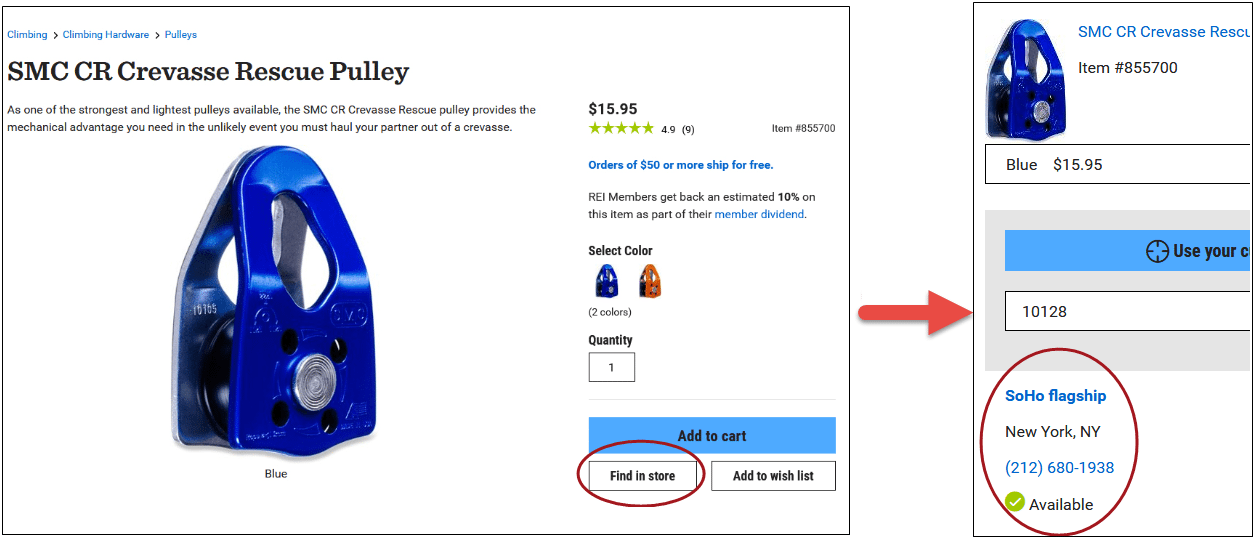
Disaster averted at every step!
This is no small feat. Companywide inventory is available to anyone who is interested in seeing it – across channels – enabling REI customers to find what they need, where they need it, and when they need it.
Looking for a New 3PL? Start with this Free RFP Template
Cut weeks off your selection process. Avoid pitfalls. Get the only 3PL RFP checklist built for ecommerce brands, absolutely free.
Get My Free 3PL RFP
Category: Fashion Retailer (UK)
Oasis is a UK-based fashion retailer with a multilingual ecommerce website and dozens of retail stores across Europe and Asia. While REI has enriched the online experience with store information, Oasis has enriched the store experience with its online capabilities.
Oasis arms its team members with tablets that are loaded with real-time product and inventory information. Associates can provide instant product details. And, if an item isn’t in stock, sales people have real-time inventory data at their fingertips, so they can direct the customer to another store, ship from another store, or ship from a warehouse. The customer is treated like royalty, and loyalty grows with every touch point.
And the checkout line is wherever the customer is. And every customer is almost always first in line! Store associates ring up purchases on their tablets too. Want to use PayPal? No problem! Customers can pay with their mobile phones too.
Every touch point is designed to help the customer effortlessly enjoy the shopping experience, browse and find, have questions answered, and ultimately enjoy a delightful shopping excursion. It’s all possible because the online world, and the behind-the-scenes order and inventory management world, is in team members’ hands on a moment’s notice.
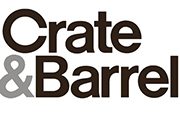
Category: Home Furnishings
If you’re a home furnishings retailer, the wedding registry is a great way to build everlasting customer relationships. The volume of customer touch points is immense:
- Newlyweds and their guests
- Registry gift selection, gift purchases and customer exchanges
- In stores, online and on mobile devices
Crate and Barrel marries the online and offline worlds to create a unified experience for gift-ers and gift-ees. The gift registry is available to the newlyweds wherever and whenever they are — in the store, online and on their mobile devices. They can instantly pick up where they left off, shifting from the computer screen, to their phone, to the store.
For Crate and Barrel customers, the online and offline worlds are a match made in heaven.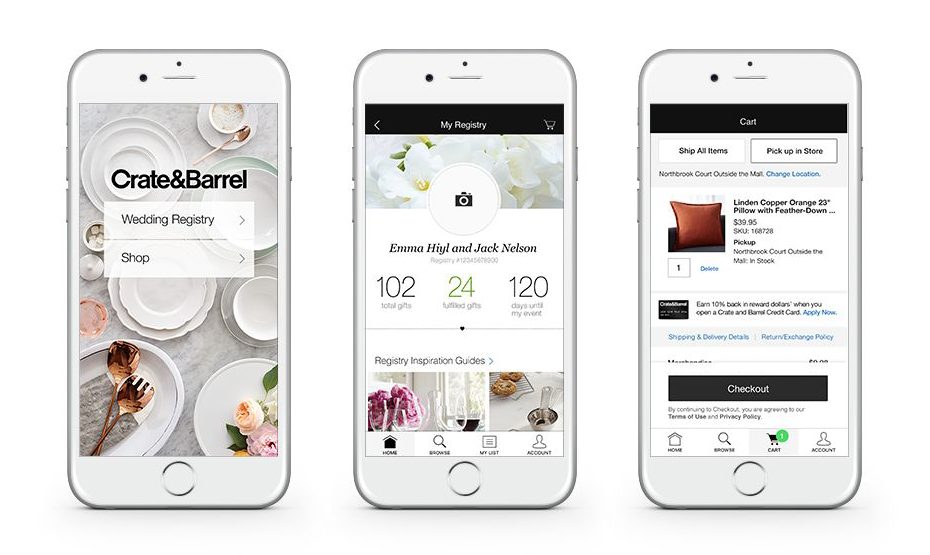
Closing Thoughts
REI, Oasis, and Crate and Barrel are delighting customers by staying next to them throughout their shopping journeys — from researching online, to shopping in stores, and reviewing orders on mobile devices.
Scaling Made Easy: Calis Books’ Fulfillment Journey
Learn how Calis Books expanded nationwide, reduced errors, grew sales while cutting headcount, and saved BIG with Cahoot
See Scale JourneyThe good news for multi-channel merchants, including growing mid-market retailers, is that these capabilities are not just reserved for enterprise retailers like Crate and Barrel. With today’s advances in cloud-based commerce technologies, omnichannel experiences are available for retailers of all sizes.
If you’re getting ready to take the plunge, our whitepaper, “The Experts Guide: Unified Commerce Vs. Separate Systems,” is a great tool to help you start planning.

Turn Returns Into New Revenue

Avoid the Wrong Commerce Platform Choice – Unified Commerce vs. Separate Systems
In this article
 3 minutes
3 minutes
Delighting Omnichannel Customers
As merchants, your goal is to delight your customers, who care about their shopping experiences — not the tools you use to provide them. For multichannel retailers, these experiences span multiple sales and service channels – stores, ecommerce websites, telephone and mail order, marketplaces and more. For reference, “Omnichannel” refers to delivering outstanding and consistent service to individual customers across these channels. “Unified Commerce” refers to the technology and mechanisms we use to deliver that experience.
Unified Commerce Enables Omnichannel Experiences
According to Boston Retail Partners (BRP), “the idea of a single, centralized, real-time platform for all customer engagement points is a key tenet of unified commerce.” If this is the case, then why are so few companies running their commerce operations on a single, unified platform?
To answer, we must first identify the different systems, platforms and data that merchants might already have in place, each specializing in different parts of the business:
- Ecommerce website / storefront
- In-Store Point-of-Sale (POS)
- Call center and CRM software
- Order management software
- Inventory management software
- Product Information Management (PIM)
- Accounting software
- Warehouse management & fulfillment software
- Online marketplace management software
Our whitepaper, The Expert’s Guide: Unified Commerce vs. Separate Systems, outlines the pros and cons of the different approaches today’s leading merchants are using to unify these disparate technologies and deliver omnichannel service excellence.
Slash Your Fulfillment Costs by Up to 30%
Cut shipping expenses by 30% and boost profit with Cahoot's AI-optimized fulfillment services and modern tech —no overheads and no humans required!
I'm Interested in Saving Time and MoneyA Unified Commerce Suite integrates all the different functional areas of the business into one standard platform. The benefits include
- Single Database: A unified commerce suite has a single database, which provides consistent, real-time information and full inventory visibility across all channels
- Easier Integration: Most unified commerce suites are fully integrated natively, and don’t have the integration costs and challenges typical of separate systems.
- Lower Overall Cost: Unified suites tend to be easier to scale and are less expensive than the combined cost of multiple separate systems.
Of course, there are good reasons to maintain separate, stand-alone systems too:
- The Need for Best of Breed: The best solution for OMS, for example, may not be part of a unified commerce solution
- Less Customization: Separate systems may not require much customization since they are already feature-rich out of the box.
Also, swapping out all legacy systems for one new unified platform is a daunting, risky task. The challenge with moving towards a unified commerce approach, as articulated by BRP’s Ken Morris, is that, “Retailers aren’t going to throw their legacy applications away, they’re not going to throw their investments away, but what they have to do is link it all in real time.”
This is Where a Hybrid Approach Fits In – Creating a Unified Commerce Experience with Separate Systems.
A robust Order Management System with powerful APIs is the central figure of the commerce technology stack, providing a single, real-time view of orders, inventory, and customers across all channels and platforms.
Benefits include:
- Enables a unified commerce customer experience fastest with lowest expense.
- Synchronizes databases to provide consistent, real-time inventory and order visibility across all channels, minimizing costs and maximizing efficiencies.
- Builds upon existing infrastructure’s rich features, without having to remove or replace existing investments.
Looking for a New 3PL? Start with this Free RFP Template
Cut weeks off your selection process. Avoid pitfalls. Get the only 3PL RFP checklist built for ecommerce brands, absolutely free.
Get My Free 3PL RFP
While stand-alone systems and unified suites each have important strengths, a hybrid approach is usually the fastest and lowest risk approach to delivering a unified experience to customers.

Turn Returns Into New Revenue


